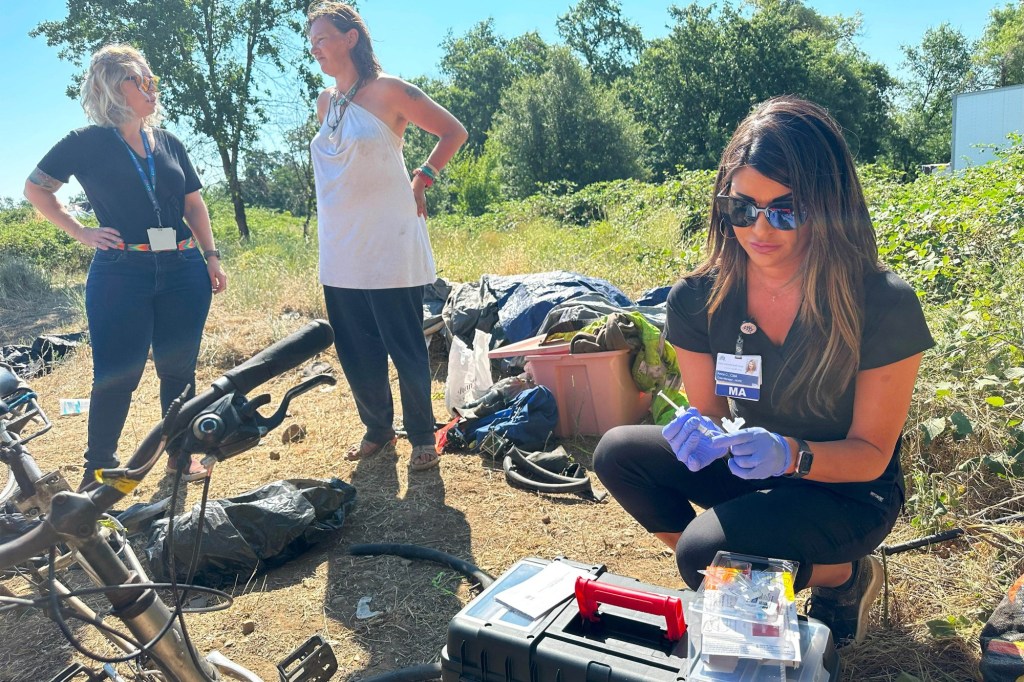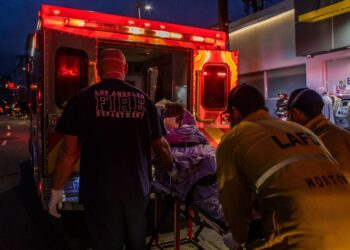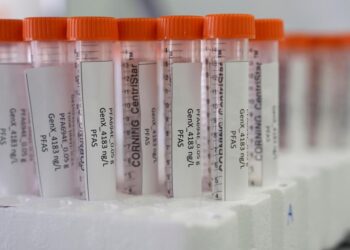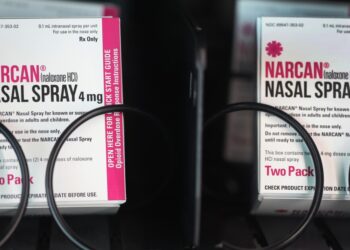The Biden administration is making it easier for doctors and nurses to treat homeless people wherever they find them, from creekside encampments to freeway underpasses, marking a fundamental shift in how — and where — health care is delivered.
As of Oct. 1, the Centers for Medicare & Medicaid Services began allowing public and private insurers to pay “street medicine” providers for medical services they deliver anyplace homeless people might be staying.
Previously, these providers weren’t getting paid by most Medicaid programs, which serve low-income people, because the services weren’t delivered in traditional medical facilities, such as hospitals and clinics.
The change comes in response to the swelling number of homeless people across the country, and the skyrocketing number of people who need intensive addiction and mental health treatment — in addition to medical care for wounds, pregnancy, and chronic diseases like diabetes.
“It’s a game-changer. Before, this was really all done on a volunteer basis,” said Valerie Arkoosh, secretary of Pennsylvania’s Department of Human Services, which spearheaded a similar state-based billing change in July. “We are so excited. Instead of a doctor’s office, routine medical treatments and preventive care can now be done wherever unhoused people are.”
California led the nation when its state Medicaid director in late 2021 approved a new statewide billing mechanism for treating homeless people in the field, whether outdoors or indoors in a shelter or hotel. “Street medicine providers are our trusted partners on the ground, so their services should be paid for,” Jacey Cooper told KFF Health News.
Hawaii and Pennsylvania followed. And while street medicine teams already operate in cities like Boston and Fort Worth, Texas, the new government reimbursement rule will allow more health care providers and states to provide the services.
“It’s a…
Read the full article here







